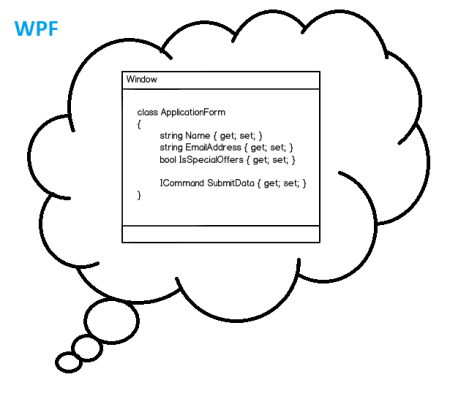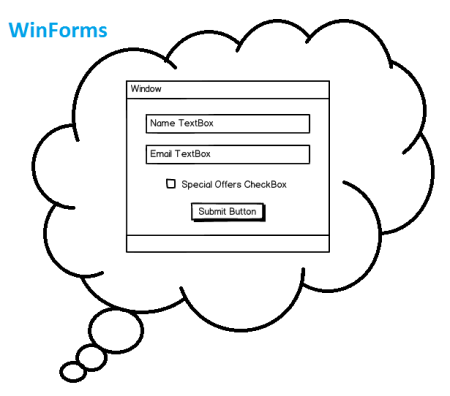I like to blog about beginner articles for WPF, and there are a few in particular that may help you out:
- Understanding the change in mindset when switching from WinForms to WPF
- What is this “DataContext” you speak of?
- A Simple MVVM Example
To summarize, the biggest difference between Winforms and WPF is that in WPF your data layer (the DataContext) is your application, while in Winforms your UI layer is your application.
To look at it another way, with WPF your application consists of the objects you create, and you use Templates and other UI objects to tell WPF how to draw your application components.

That’s the opposite of WinForms where you build your application out of UI objects, and then supply them with the data needed.

Because of this, the designer isn’t actually used that much since your application components are designed in code, and the designer is only needed to draw a user-friendly interface that reflects your data classes (typically Models and ViewModels)
And personally, I prefer to type all my XAML out by hand since it’s faster and doesn’t make as much of a mess as the drag/drop WPF designer does, although I do use the Designer on occasion to preview what my UI will look like.
So to your answer your question about if there’s other WPF designers suited for WinForms developers, I would suggest that instead of looking for another designer, instead look to learn how to use WPF in the way it’s meant to be used. Using WPF like it’s WinForms means you miss out on much of what makes it so great 🙂